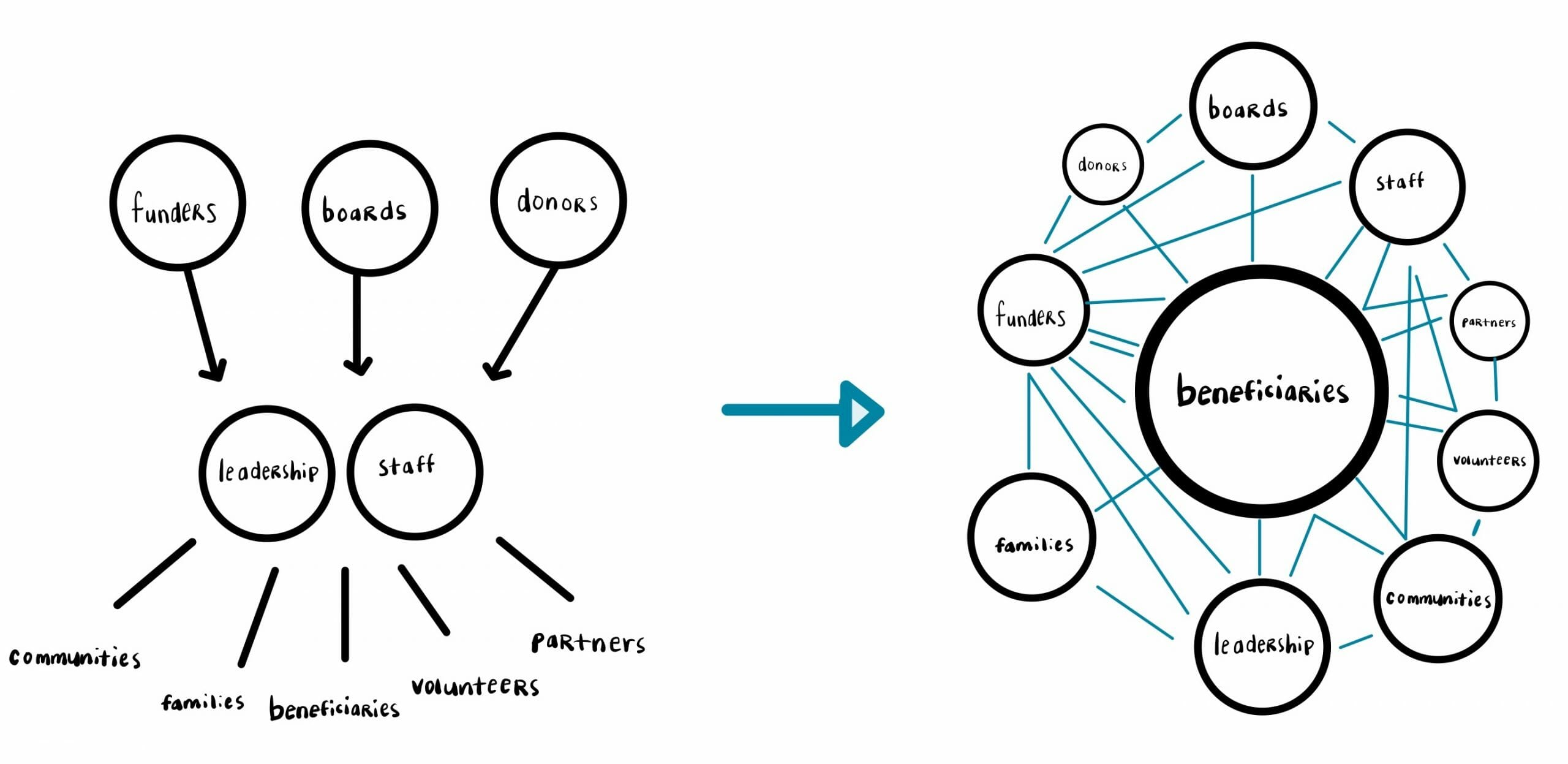If you read last week’s post, you might remember that I got a little worked up about the way the nonprofit sector has historically approached strategy. Despite the many important moves our sector has taken to double down on its commitment to equity and inclusion, so many organizations are still shaping their strategic plans (and communications, fundraising, and program plans, etc.) without meaningfully including the people they serve, and their other diverse stakeholders, in the process. This is no different from a business shaping its strategy without asking for input from its customers. It’s ineffective, inequitable, and it has to stop.
As a strategy firm that works with nonprofits, we’re as much to blame as anyone. That’s why I shared last week that we’re currently on a quest to rewrite the rules that govern nonprofit strategy, and today, I want to tell you a bit more about what that means.
Indulge me for a moment, and tap back into your imagination…
Imagine the next time you sit down to do important strategic work for your organization. Now, you’re operating with a new rule book in hand, and everything is different than that memory you conjured up last week, of the last time you engaged in strategic planning or a similar process.
[bctt tweet=”Imagine the next time you sit down to do important strategic work for your nonprofit and you’re operating with a new rule book in hand.” username=”ProsperStrat”]This time, you’re surrounded not just by your colleagues and board members, but by the people who use your programs and services, and likely a few donors, funders and community members as well. Those who most affect — and are most affected by — your organization are all in the room, and they all have a voice in determining the shape your strategy should take. Or if they can’t be in the room physically, their input and ideas are, because you’ve gathered them via surveys, interviews, focus groups or other similar approaches.
You begin the strategic process by hearing their perspectives on where your organization stands today, and how they’ve been impacted by past strategies. Then, you capture their ideas and input on how your organization could best align with their needs and priorities in the future. You center your attention on the people and communities your organization exists to serve. However, you don’t leave out other stakeholders, such as donors and community partners, because their support is also critical to your organization’s success. Instead, you aim to help them tune into the priorities of the people and communities you serve so that everyone can finally align, once and for all, around what matters most.
Together, your leadership staff, board, beneficiaries and other stakeholders make important decisions about how your organization should focus its work and meet its goals. But together doesn’t mean by consensus. On the contrary. The new rule book has led you to distribute decision-making power to those closest to each issue, and your organization has become more decisive than ever. As a result, you end up with the clearest, most actionable strategic plan (or communications, fundraising, or program plan) you’ve ever had.
Once it’s time to begin bringing your plans to life, you don’t simply thank your stakeholders for their time and get to work. Far from it. You keep them regularly informed of how your organization is progressing relative to the priorities you set together, and ask for their continued feedback, in a way that is respectful of their time. Your strategy continually evolves as a result of their input, becoming ever more effective as time goes on. And when it comes time to assess whether your organization is advancing its mission and goals, you won’t have to rely on formal evaluations or sophisticated measurement tools for all your answers. The ultimate power to determine whether your organization is effective will be held in the hands of the people and communities most affected by the work you do.
This isn’t a pipe dream.
This is Shared Power Strategy.

It’s a new approach to co-creating your nonprofit’s strategies hand-in-hand with your many diverse stakeholders, and aligning them once and for all to the priorities of the people and communities you exist to serve. It holds the potential to make both your organization — and the entire sector — more effective and more equitable.
But first, we have to recycle our old rule books for nonprofit strategy work, and subscribe to five new, simple rules for Shared Power Strategy.
Next week, we’re unveiling our Shared Power Strategy Rule Book to the world, and as our email subscribers, you’ll be the first to receive it. Then, we’ll spend the next five weeks breaking down the rules within it so that your organization can begin to adopt the Shared Power Strategy philosophy in its own work.
I’m not going to deny that sharing the power to shape your organization’s strategies with your stakeholders is challenging work. But that’s exactly why it’s so important. Keep an eye on your inbox next week for a first look at the Shared Power Strategy Rule Book. I can’t wait to hear what you think about it.